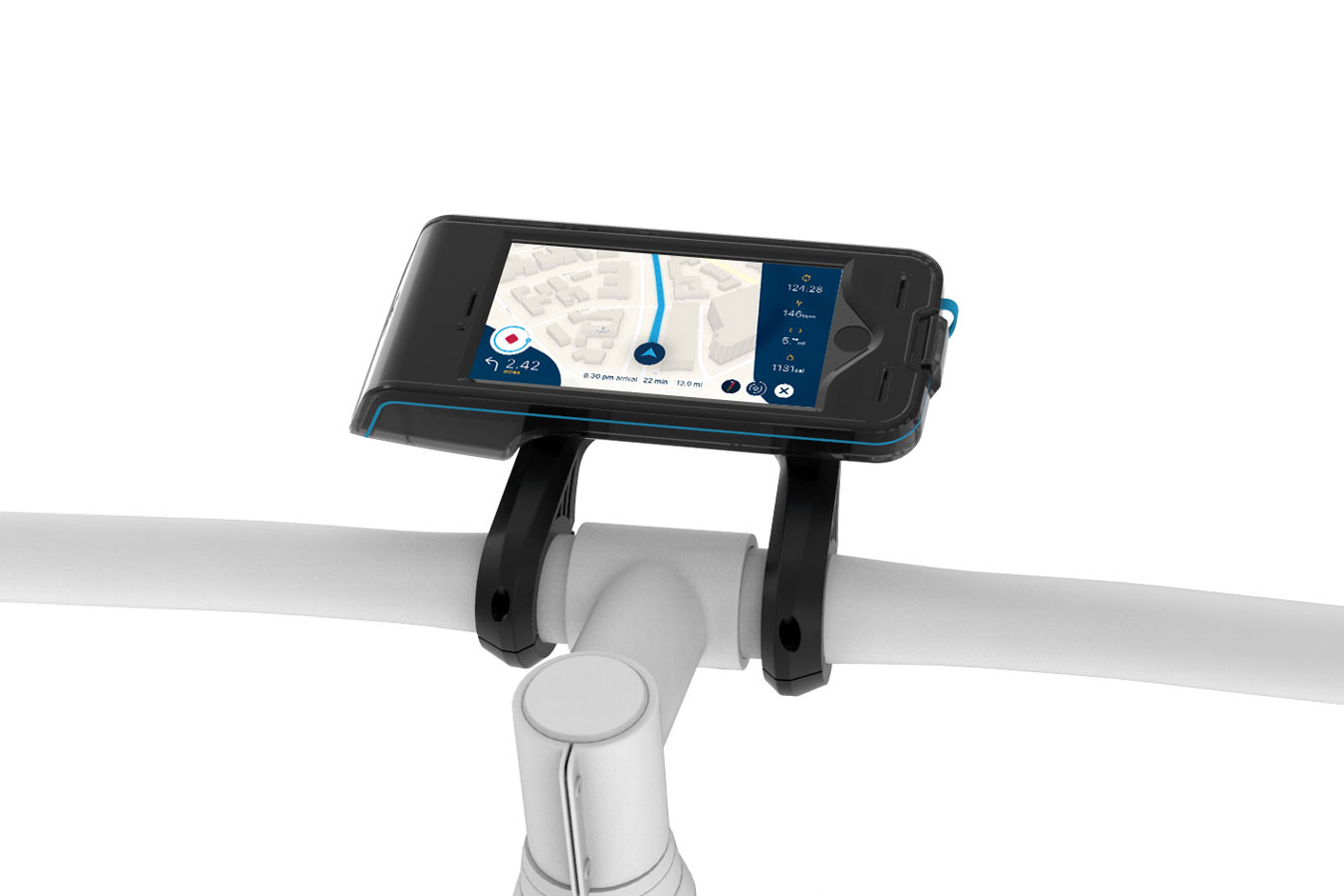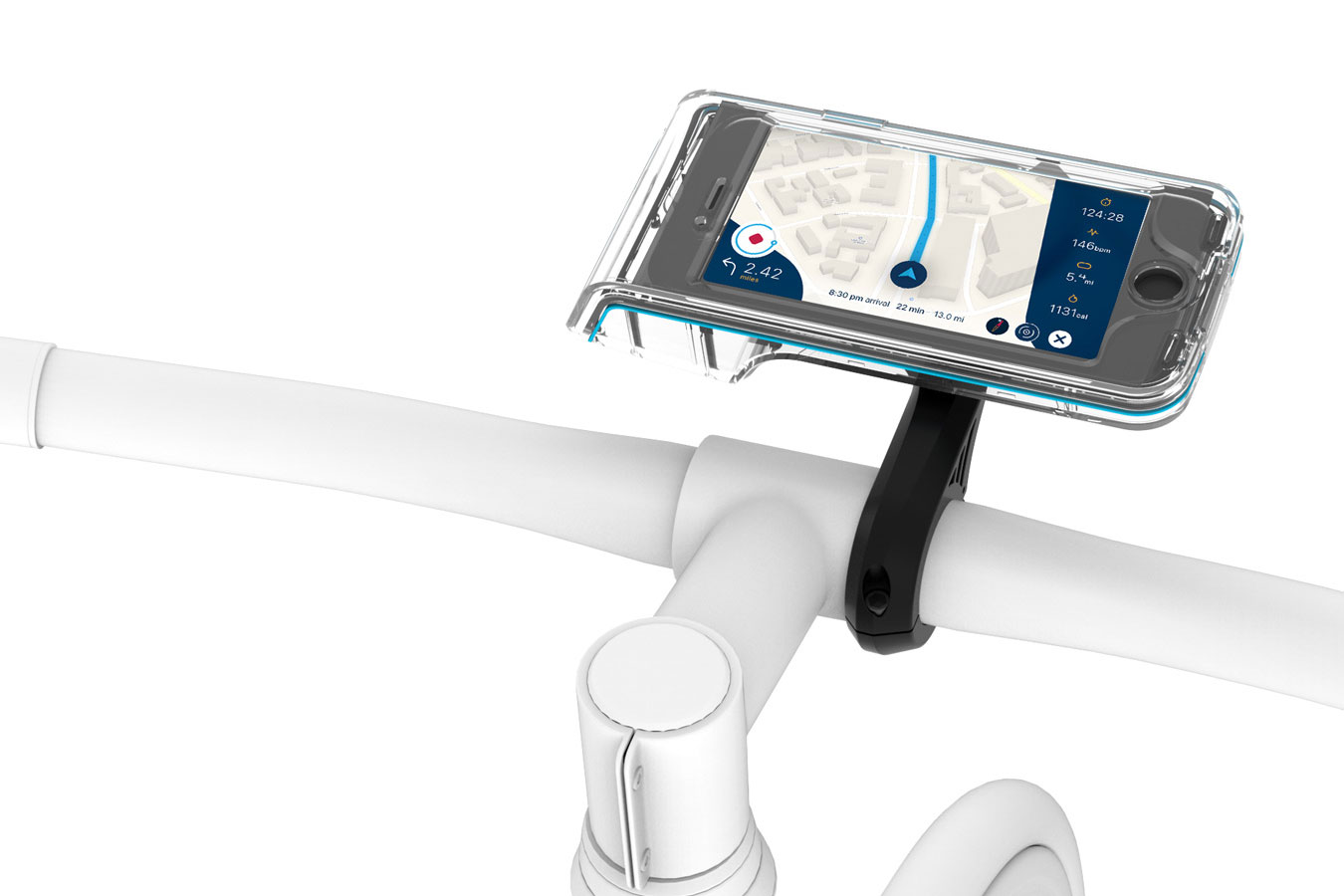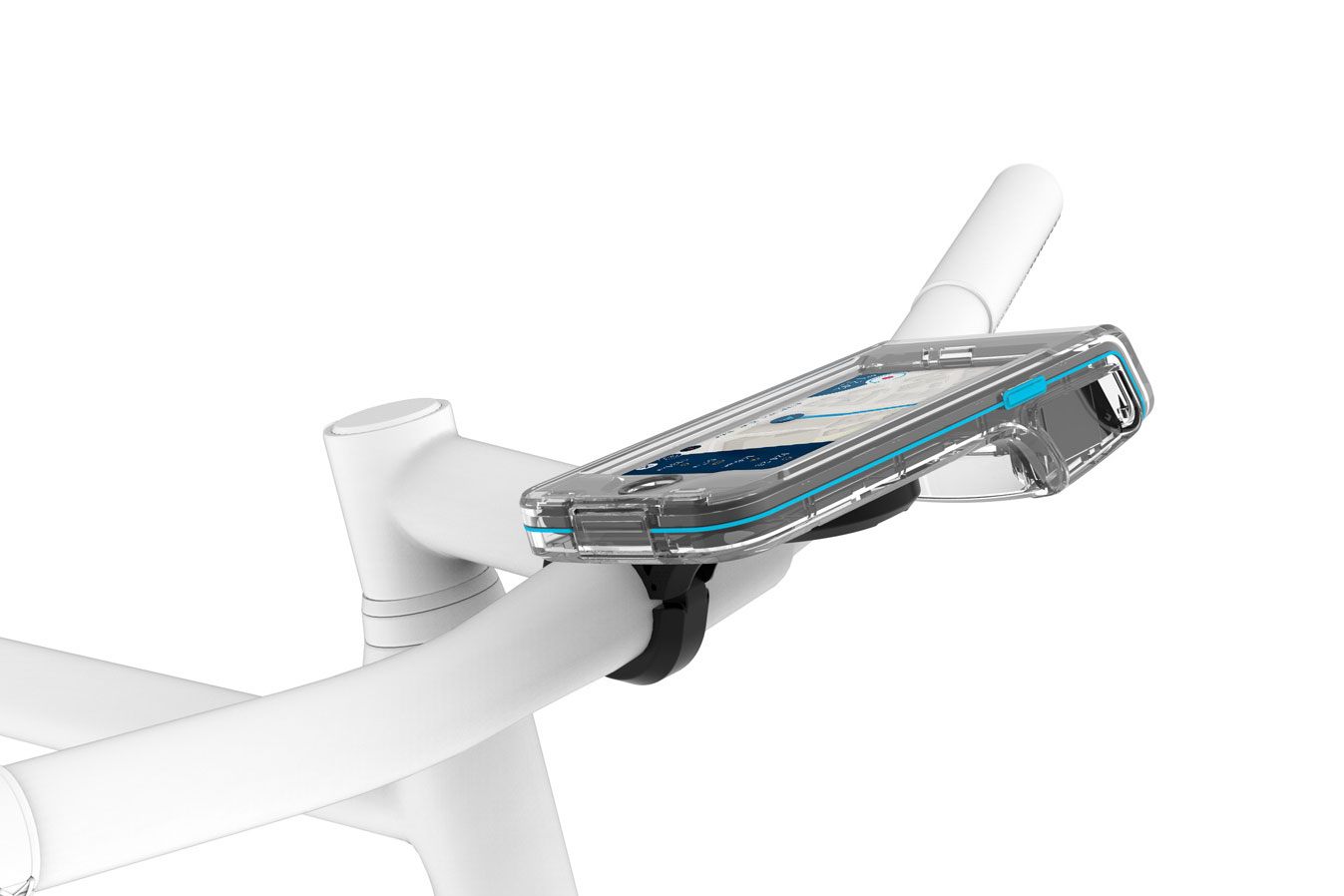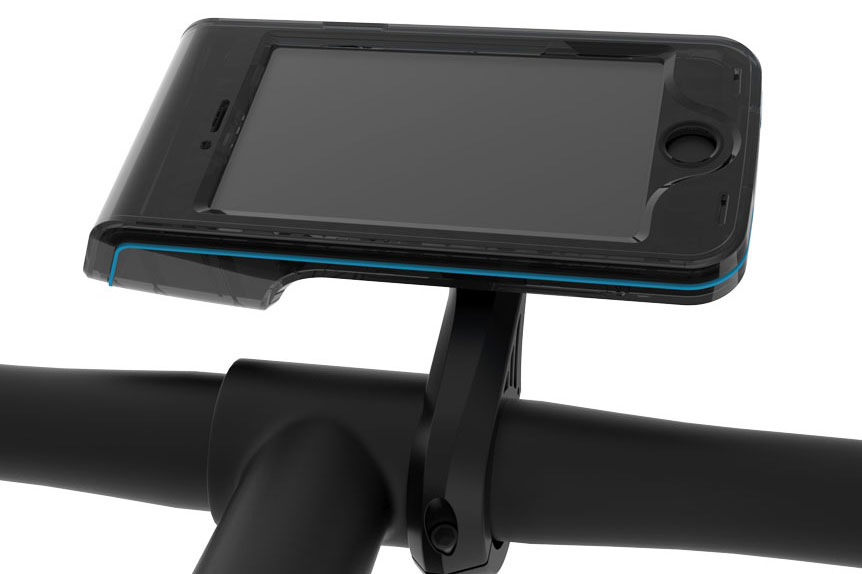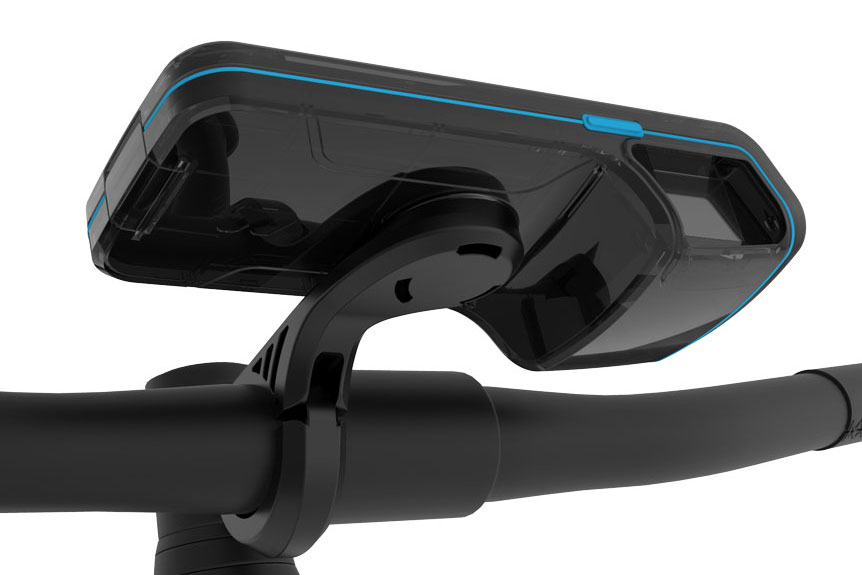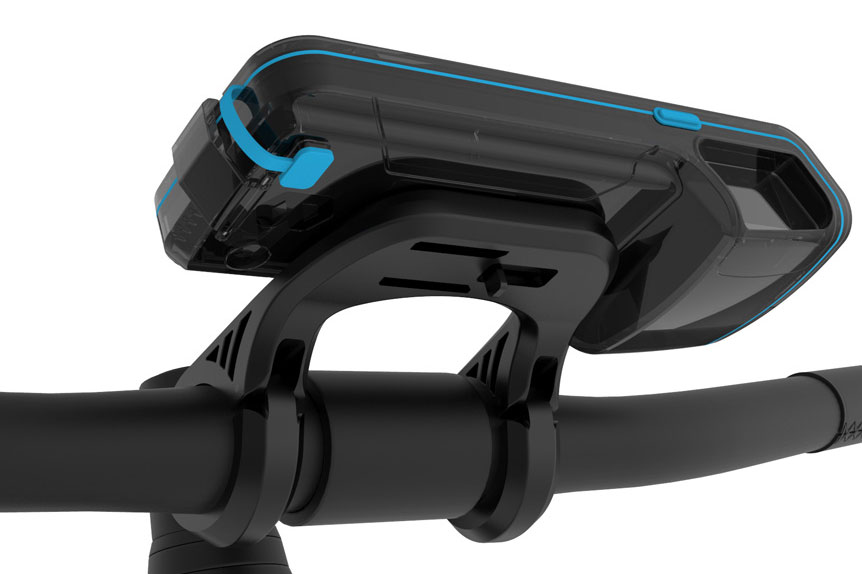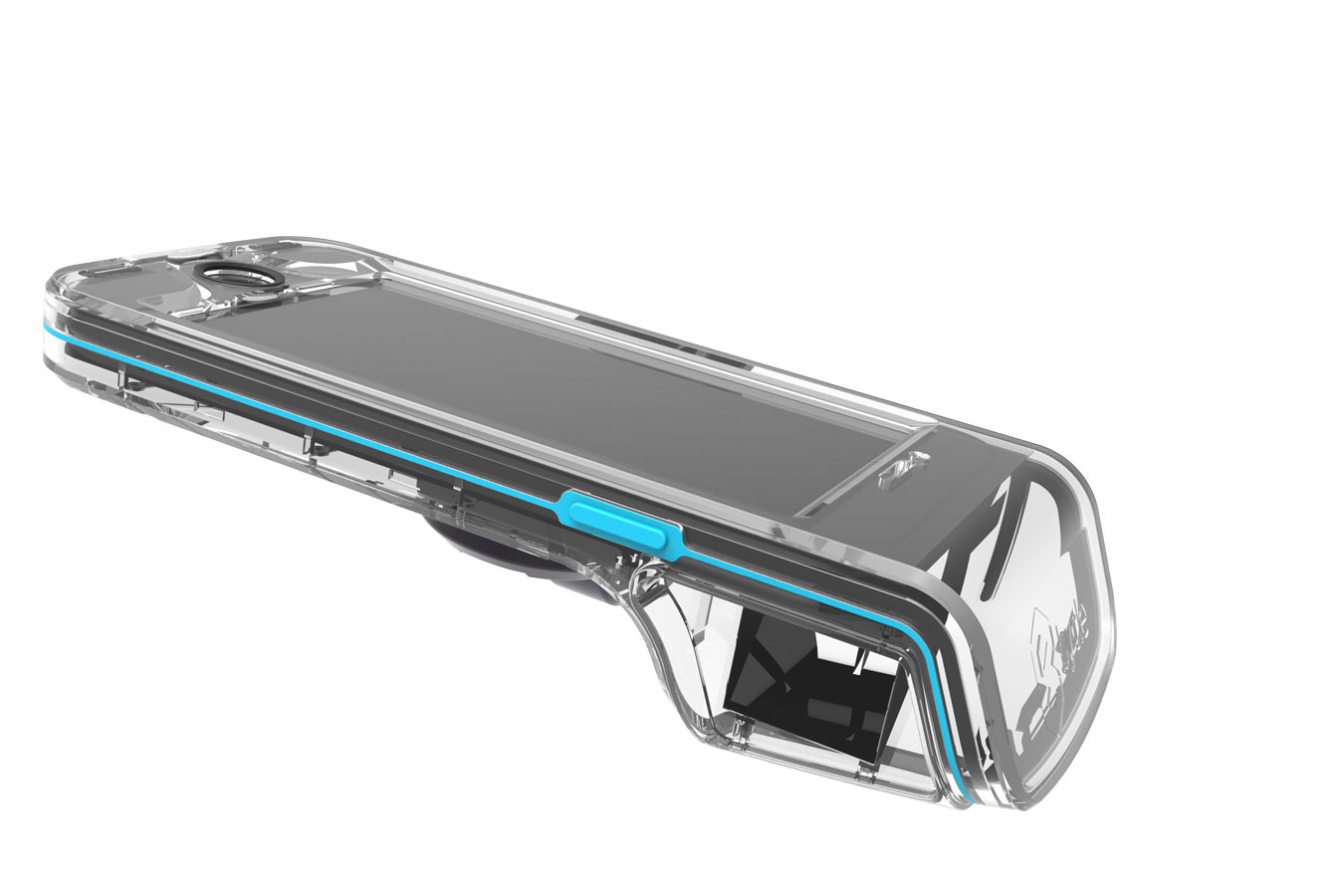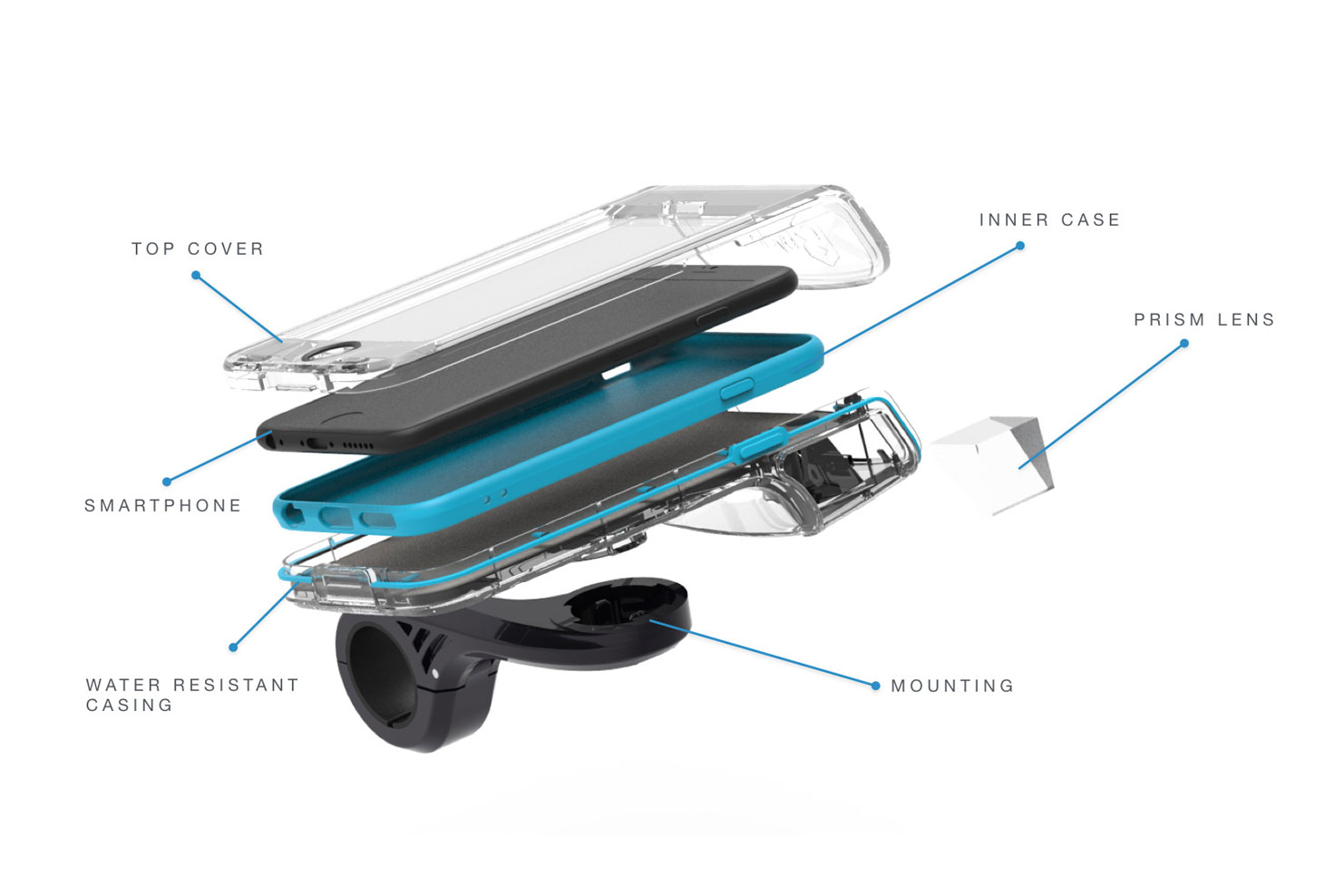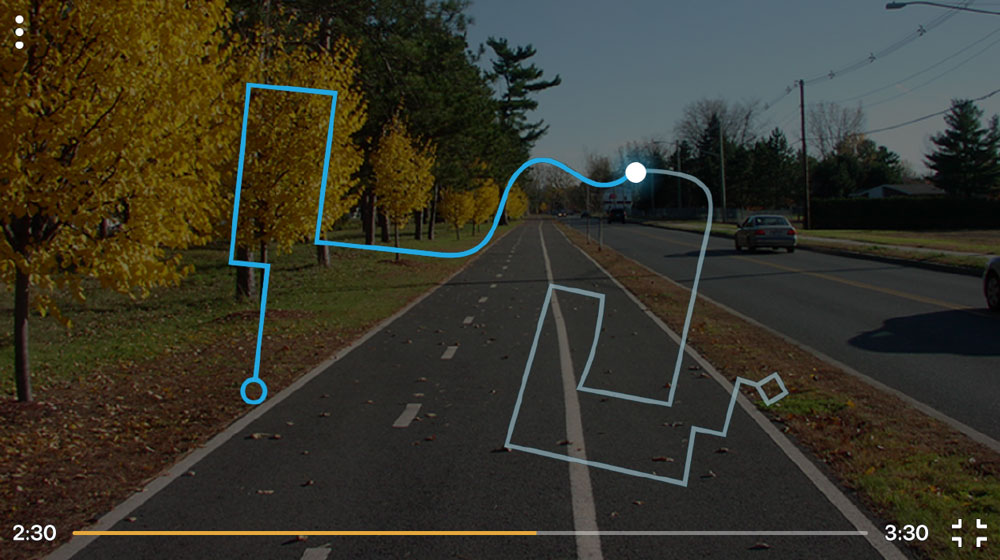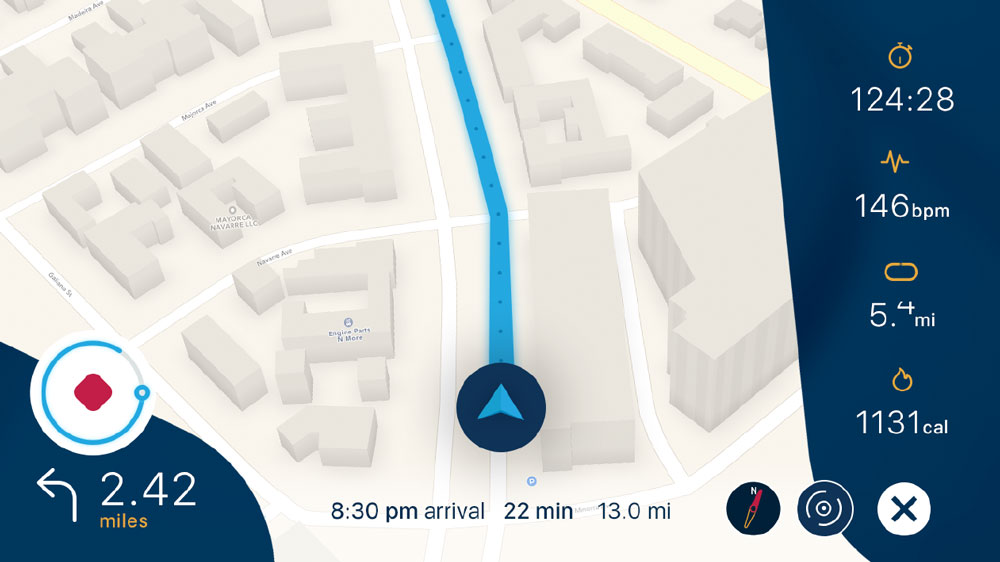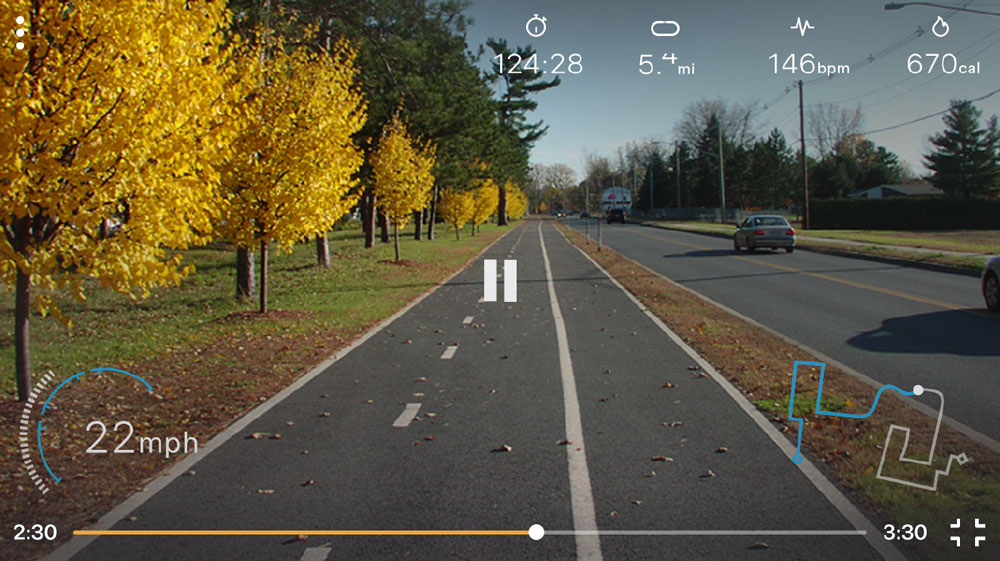For avid bicyclists, there are plenty of add-on computers you can buy to track your ride, from basic $50 devices that record mileage and cadence, to sophisticated units with GPS and color displays that can cost $500 or more. But it turns out that most cyclists probably already own a bike computer — their phones.
Realizing this, two young Miami-based entrepreneurs set out to create Bycle, a system revolving around a combo case and mount for the iPhone 6/6S or 6 Plus/6S Plus and app. Together, Bycle turns an iPhone into a feature-rich bike computer, for less than the cost of a dedicated device. The product launches today on Kickstarter.
Miguel Hidalgo, CEO and co-founder of Bycle, told Digital Trends that to achieve what Bycle can provide the rider, currently, one would have to use multiple devices and services to track a ride – a combination of GoPro, Garmin, Nike Plus, and the social network Strava. Hidalgo said the Bycle solution is far less expensive, or cumbersome, than buying either all those units or a bike computer.
With the app, cyclists can track their calories burned and how far and fast they rode, plan a route, and view their real-time position and movement on a map – all in an attractive graphical user interface that’s easy to navigate. In a digital world where everything is social, the info can be shared with friends or posted on social media. The app also offers ways to improve your ride and challenge others.
One unique feature is the ability to record videos during a ride with the iPhone camera. Like a dashcam, you can record a point-of-view video similar to using a GoPro. However, because video recording happens through the app, Bycle can overlay the data onto the video, giving you a visual representation along with the metrics. It’s like telematics for a car, except for a bicycle. Hidalgo said the app will also have the option to switch to a paired GoPro instead, if the user wishes. In the future, the app could offer simultaneous recording with both the iPhone camera and a GoPro, and possibly live-streaming via Periscope.
Because the camera faces downward due to the angle of the phone when mounted, Bycle’s creators had to find a way for the camera to see forward while still allowing the rider to see the screen. To achieve this, the water- and shock-resistant hard case has a prism that reflects the image back to the camera lens – an ingenious workaround.
The case itself, which also protects the phone, comes in two versions: an E-mount that easily attaches to a bike handlebar via a screw, or an S-mount that includes a 3,000mAh battery for long rides.
The company plans to develop cases for other phones in the future, but it will be limited to select iPhone models at launch. The reason is simple: Android phones not only come in different sizes and shapes, but every manufacturer positions the cameras differently. The iPhone camera’s position has stayed in the same spot since inception, which makes it easier to design around.
Hidalgo said Bycle benefits different riders. As mentioned, for the performance user, it could help improve their ride by analyzing the metrics. For leisure cyclists, they can share the POV videos. But Hidalgo said the goal is to also create a community of Bycle riders who can not only challenge each other, but also trade tips and tricks and discover new or better routes.
For the Kickstarter campaign, the E-mount version costs $45 and the S-mount goes for $70. The funds ($50,000 goal) will go toward production, and the company anticipates first-batch shipment in September.
Hidalgo and his co-founder, Gustavo Grossmann, have art backgrounds and are designers by trade, having graduated from the Miami International University of Art and Design. The idea for the Bycle was conceived in 2014, when both were still in school. Hidalgo said they were tasked to create a project for an engineering class, and had originally looked at creating a smart bike. They realized there were already many smart bike options; instead, they focused on how to make ordinary bikes smarter, and, seeing that bike accessories are a $1.3-billion market with room for growth, they pursued development of the Bycle.
While the Bycle was in development, Garmin unveiled its Virb camera, an action cam with ANT+ support for sensors that can track and record heart rate, cadence, temperature, water depth, wind direction and speed, engine RPM, torque, and many other metrics – data that can overlay over a video.
Indeed, this performance data is what’s missing from Bycle. But Hidalgo said that data must be transferred and processed on a computer first, while Bycle is a real-time, mobile-first technology. Since Bycle is targeted toward millennials, the group that creates the most content on iPhones, it’s a more appealing product than other solutions, Hidalgo said. But if Bycle could incorporate HealthKit into its app in the future, that could provide the type of performance data it’s missing.





